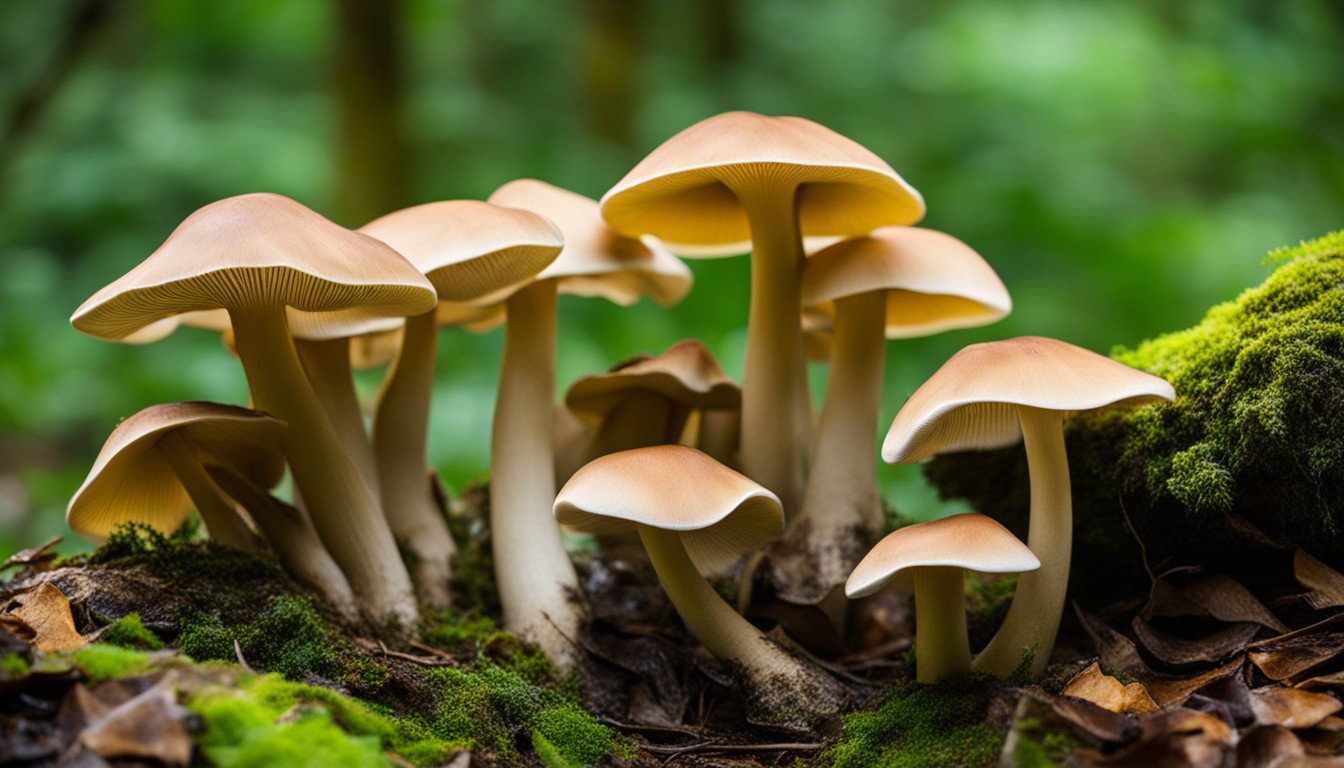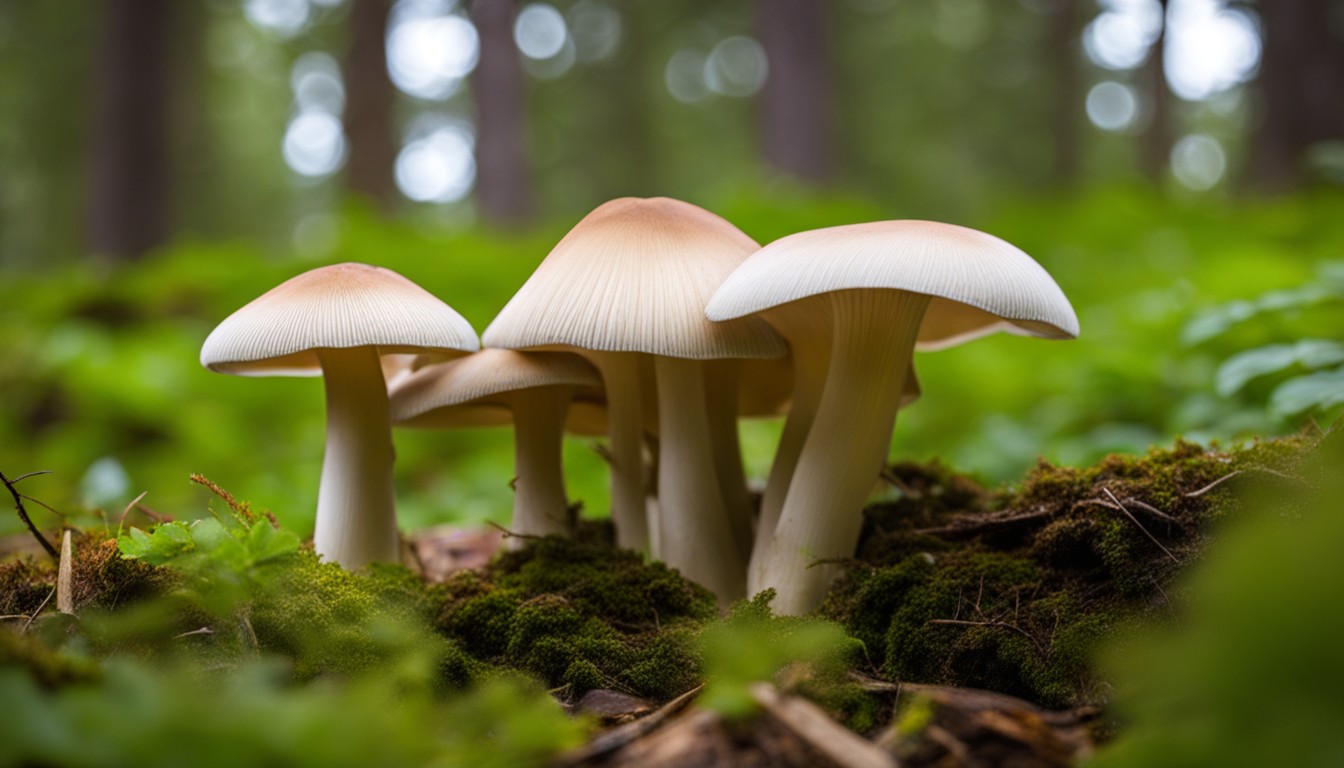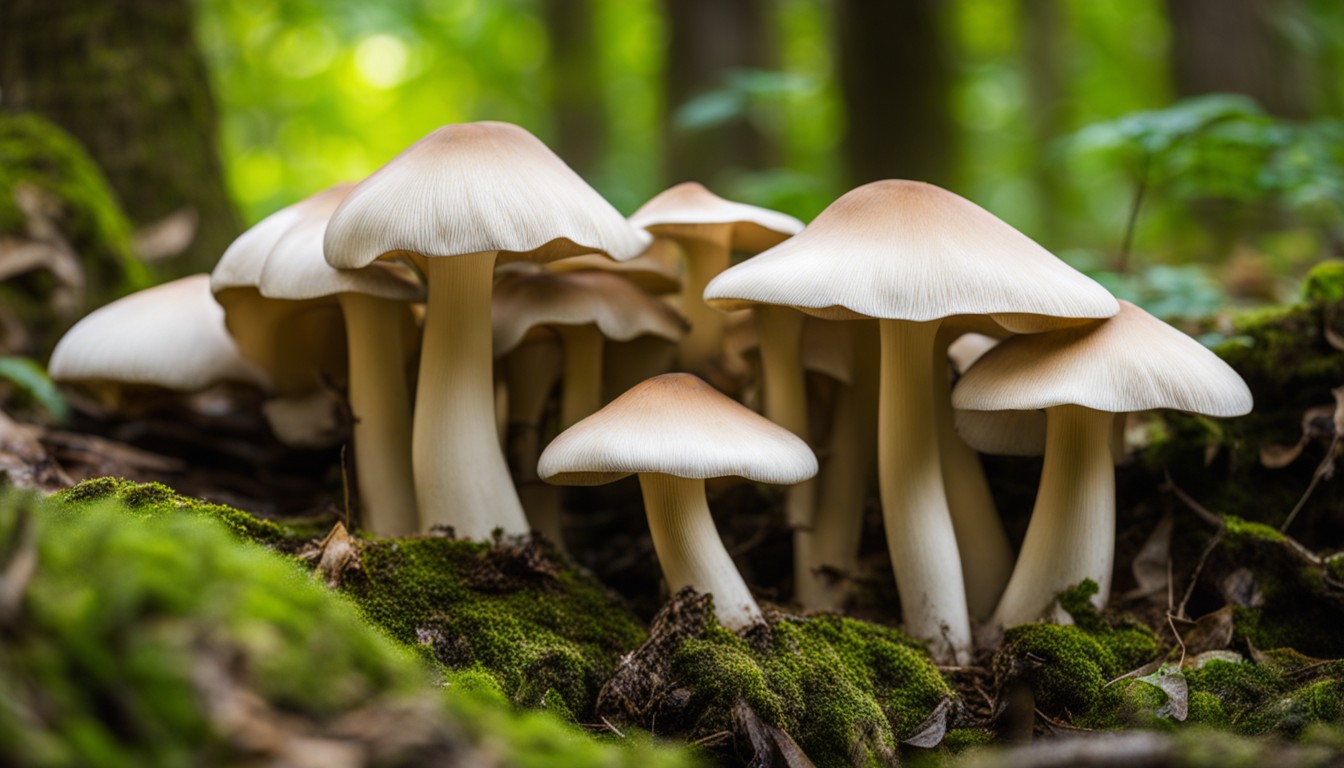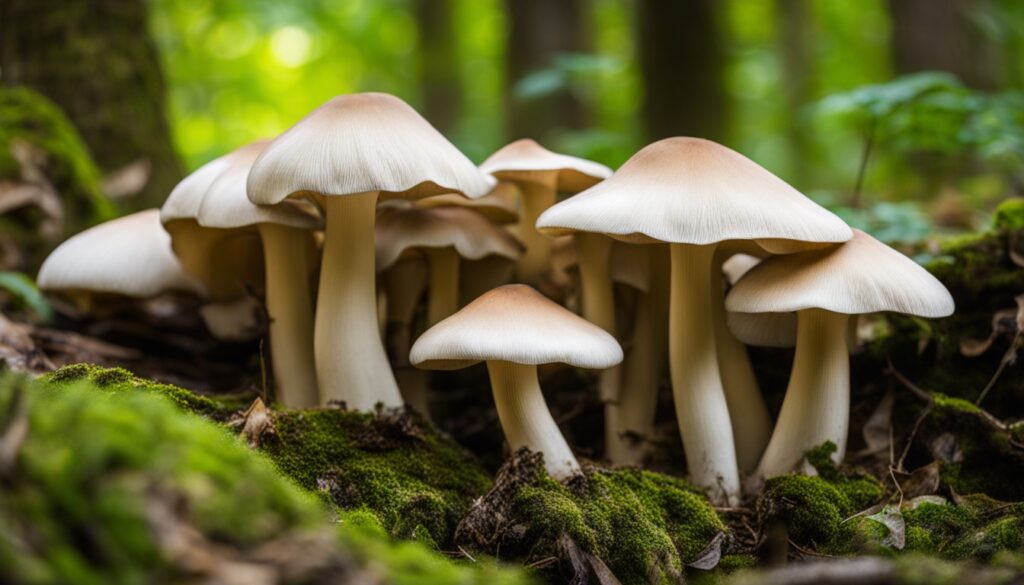Take a captivating journey into the enchanting realm of Wyoming’s mushrooms, where an array of fascinating species awaits discovery. Delve into the intricacies of their vibrant diversity, from vibrant caps to delicate stems, and uncover the crucial ecological roles they play in the Cowboy State. This comprehensive guide will provide you with a deeper understanding of the remarkable world of mushrooms in Wyoming, allowing you to appreciate their beauty and significance in the natural environment.
Mushrooms of Wyoming: A Guide to the Fungi of the Cowboy State
Wyoming’s vast wilderness teems with a stunning variety of fungi, playing pivotal roles in the state’s environmental health and biodiversity. This in-depth exploration will serve as an invaluable companion to those interested in unearthing the secrets of Wyoming’s mushrooms.
Understanding Wyoming’s mushrooms is a journey through the sublime, the dangerous, and the utterly intriguing. Our comprehensive guide provides readers, both beginners and seasoned mycologists, with the knowledge necessary to navigate Wyoming’s fungal flora.
- Introduce Wyoming’s abundance and diversity of mushrooms
- Explore the crucial role of fungi in Wyoming’s ecosystems
- Understand the significance of correctly identifying Wyoming’s mushrooms
- Study the Morel, Chanterelle, Bolete, and Amanita varieties commonly found in Wyoming
- Delve into the unique and rare varieties such as Coral, Lobster, Blue Chanterelle, and Fairy Ring mushrooms
- Learn about responsible foraging and safety measures to avoid poisonous lookalikes
- Peruse resources available for mushroom enthusiasts including local mycological societies, online identification guides, and field guides specially designed for Wyoming’s mushrooms.
Introduction to the Fungi of Wyoming
Venturing into the world of Wyoming fungi introduces you to a myriads of colors, shapes and sizes. From common delicious edibles to rare intriguing species, this diverse group plays a pivotal role in Wyoming’s ecology.
The fungi in Wyoming’s forests form an integral link in the ecological chain, contributing to the state’s vibrant and diverse natural environment.
Wyoming’s mushrooms, often unseen, yet abundant in the forests, contribute to a dynamic ecosystem. Understanding these fungi represents not just an introduction to mycology, but also a gateway to the wider ecological web of the Cowboy State.
Understanding the Role of Fungi in Wyoming Ecosystems
Decoding the mysteries of fungi reveals their profound impact on Wyoming’s flora and fauna. As key decomposers, fungi recycle nutrients, enabling plants to flourish and consequently supporting a vibrant wildlife community.
The ecological importance of fungi in Wyoming cannot be overstated. By forming intricate networks with plant roots, fungi significantly enhance soil fertility and water absorption, playing a pivotal role in Wyoming’s diverse ecosystems.
Diversity and Distribution of Wyoming Mushrooms
Mapping biodiversity, the fungi of Wyoming amaze with their numbers and species variety. From the infamous Amanita to the edible Morel, each region has unique mushrooms flourishing in diverse ecosystems. Understanding these species, their habitat and geographical span is a fascinating science, nurturing foraging skills and promoting environmental respect.
Covering a broad geography, mushrooms are found at every altitude, from high alpine meadows to dry shrublands. Wyoming’s forests, abundant with conifers, aspen, and oak, provide ideal habitats for an impressive array of fungi. Even urban areas and common backyards can yield a surprising variety of species, making mushroom identification a hobby within everyone’s reach.
Rich diversity is intrinsic to Wyoming’s mushroom landscape. It stems from ecological complexity, microclimatic diversity, and soil composition. The Cowboy State’s mushrooms can appear unexpectedly, from a solitary cap under a pinyon pine to a cluster of chantarelles within a damp forest. Delighting hobbyists and scientists alike, this fungal diversity paints a vibrant tapestry across the state.
Importance of Mushroom Identification
Why Identifying Wyoming Fungi Matters: From Edibles to Poisonous – Wyoming’s diverse fungi can range from delectable edibles to hazardous, even lethal, species. Clear and accurate identification ensures safe, responsible foraging, helping avert potential health risks linked to toxic look-alikes.
The Art and Science of Identifying Mushrooms in Wyoming – Mushroom identification is both art and science, involving detailed observation, knowledge of taxonomic characteristics, and familiarity with the environment. A successfully identified mushroom not only adds to the local biodiversity records but also contributes to scientific studies and conservations.
A misidentified mushroom can have serious consequences. Ingestion of poisonous varieties may result in gastrointestinal discomfort, hallucinations, organ damage, or, in extreme cases, fatality. Accurate mushroom identification is prevalent, a life-or-death situation.
Beyond safety reasons, understanding and correctly identifying the fungus species will enhance the foraging experience. It deepens respect for nature, fosters ecological awareness, and fuels the intrigue for the mycelium kingdom’s astonishing complexity.
Common Mushrooms Found in Wyoming

Exquisite and diverse, Wyoming’s landscapes are home to a myriad of mushroom species. Morel, Chanterelle, Boletes, and Amanita represent some of the most commonly found varieties, each contributing uniquely to the richness and ecological balance of the region.
The diversity of fungi in Wyoming is remarkable, encompassing captivating varieties like Morels, popular for their honeycomb caps; Chanterelles, known for their golden hue; Boletes, with their distinctive pore-spored undersides; and the infamous Amanitas, equally revered and reviled for their dangerous toxicity.
Morel Mushrooms: Hunting the Elusive Delicacy
Morel mushrooms, highly coveted for their unique and rich flavor, are a springtime treasure in Wyoming’s diverse ecosystems. Their elusive nature, hiding among leaf litter and burnt wood, offers an adventurous hunting experience for foragers.
- Understanding Morel Habitats: Favoring hardwood forests, burn sites, and areas near water sources.
- Ideal Foraging Season: Typically found in spring, especially a few days after rainfall.
- Hunting Tips: Morels blend in with leaf litter and burnt wood; keen observation is necessary.
- Importance of Confirmation: Morels have false lookalikes; foragers should learn to distinguish between the two.
Chanterelles: Golden Treasures of Wyoming’s Forests
Tucked away in the verdant forests of Wyoming, chanterelles emerge as golden treasures, prized for their gastronomic appeal. These distinctive mushrooms thrive in specific corners of the Cowboy State, offering foragers the joy of unearthing a flavorful find.
- Season: Usually spotted between midsummer and early fall
- Location: Commonly found in deciduous and coniferous forests, particularly under oak, poplar, and birch trees
- Appearance: Chanterelles are known for their golden-yellow color, funnel shape, and ridged undersides
- Edibility: Highly prized for their nutty and mildly peppery flavor
- Safety: While Chanterelles have few dangerous lookalikes, they can be mistaken for the toxic Jack-o’-Lantern mushrooms
Boletes: The Pore-Spored Mushrooms
Distinct from other fungi, Wyoming’s Bolete mushrooms showcase a unique, porous underside instead of the common gilled pattern. They thrive in various diverse forest types across the Cowboy State, gaining recognition for their noteworthy features and edibility.
- Forests where Bolete mushrooms are commonly found
- Key characteristics for identifying Bolete mushrooms
- Useful tips for safely foraging and preparing edible Bolete mushrooms
Amanitas: Beware of the Poisonous Varieties
Stepping into the realm of Amanitas in Wyoming, a word of great caution is required, not all are edible. Severe poisonings often occur from misidentification. So, it becomes vital to distinguish the edible from the deadly Amanitas.
- Expertise in mushroom identification is crucial for safe foraging.
- Misidentification can lead to severe health consequences.
- The fly agaric (Amanita muscaria) is identifiable for its bright red cap and is poisonous.
- The death cap (Amanita phalloides) is lethal and often mistaken for an edible variety.
- Use a field guide or online resource to assist with identification.
- Never consume wild mushrooms unless you are 100% confident in their identification.
Unique and Rare Mushrooms of Wyoming

The allure Wyoming exhibits as an untapped treasure trove for rare and unique mushroom species is unparalleled. It’s truly a mycologist’s dream with a vivid assortment of marvelous fungi feasts awaiting discovery.
Sibling to the diverse wildlife and breathtaking sceneries of Wyoming are its unique mushroom species. Thriving in its hardy landscapes, these fungal jewels offer a glimpse into the state’s rich mycological diversity which is a delight to spot and study for enthusiasts and researchers alike.
Coral Mushrooms: Delicate Beauties of the Western Wilds
Coral Mushrooms, with their intricate structures imitating oceanic coral reefs, emerge as unique gems within Wyoming’s broad fungal catalog, accentuating the state’s bountiful and intriguing biosphere.
- Notice the intricate branches of Coral Mushrooms, resembling oceanic coral.
- Identify the diversity of Coral Mushrooms, from white, yellow, or tan specimens.
- Look for these mushrooms in coniferous forests, particularly in the mountainous regions of Wyoming.
- Observe their growth patterns, usually solitary or in small groups.
- Take note of their distinctiveness, both in terms of aesthetics and their nutrient recycling role in Wyoming’s ecosystems.
Lobster Mushrooms: Nature’s Colorful Masterpieces
The Lobster Mushroom, a rare gem in Wyoming’s mycological tapestry, presents an intriguing dichotomy between its vibrant, eccentric exterior and its down-to-earth, woodland habitat. Its colorful nature lends a unique aesthetic to the forest floor; look out for its fiery hues amongst drab leaf litter and decaying logs.
Hypomyces lactifluorum, more commonly known as the Lobster Mushroom, gets its nickname from its striking resemblance to a cooked lobster. It occurs when a parasitic fungus infects a host mushroom, transforming it into a bright, orange-red masterpiece with a hard, crust-like texture reminiscent of lobster shells.
Lobster Mushrooms are not only visually captivating but also present an intriguing tale of fungal transformation. Their life begins as a humble Russula or Lactarius mushroom, until overtaken by the parasitic Hypomyces fungus. This biological invasion instigates a dramatic metamorphosis, resulting in the Lobster Mushroom’s iconic appearance.
Despite their striking appearance and the thrilling chase they offer foragers, handling Lobster Mushrooms requires caution. While edible and tasty when cooked, lobster mushrooms can induce allergies in some individuals. Moreover, their ‘host’ mushroom may also occasionally be a toxic species. Always verify your find before consumption.
The Lobster Mushroom is indeed a testament to the hidden treasures concealed within Wyoming’s fungal kingdom. Despite the necessary precautions, their unique beauty and culinary value make them a sought-after find amongst the state’s mushroom gatherers. They truly are nature’s colorful masterpieces.
Blue Chanterelles: A Special Find in Wyoming
Undoubtedly, hunting the elusive Blue Chanterelles is an indelible part of Wyoming’s fungal experiences. Although rare, these vibrant mushrooms grow quietly in Wyoming’s lush forests, nestled under the shade of towering conifers.
Considered special finds due to their unusual color and the challenge to spot them, Blue Chanterelles present an adventure for mushroom foragers in Wyoming. Serendipitous encounters with this magical fungus add a touch of deep-sea blue to the earthy hues of Wyoming’s woodland landscapes.
Gastronomically, Blue Chanterelles of Wyoming hold a special flavor uniquely their own. Their melange of buttery, peppery, and mildly sweet tastes embodies the essence of the state’s diverse and rich forest ecosystem on the palate.
While the functionality of Blue Chanterelles extends beyond aesthetic appeal and culinary delight, their discovery also signifies the zealous spirit of Wyoming’s fungi enthusiasts. Their multitude of uses contributes significantly to the area’s biological tapestry.
Fairy Rings: Intriguing Circles of Fungal Growth
Wyoming’s diverse fungi offer a myriad of sights, none more intriguing than the Fairy Rings. These mysterious circular formations, comprised of a remarkable fungal architecture, pique the curiosity of nature enthusiasts and scientists alike.
Forming gradations of arcs or full circles, Fairy Rings result from a unique fungus growth pattern. A captivating spectacle, understanding their formation can shed light on the resourceful strategies fungi employ to thrive in Wyoming’s varied ecosystems.
Mushroom Foraging and Safety Tips
Mycophagists, or mushroom foragers, in Wyoming are advised to perform their excursions with caution. Awareness about wilderness ethics, conservation efforts, local mushroom laws, harvesting techniques, and potential fungal hazards help ensure a safe, rewarding, and responsible mushroom-foraging experience.
Engaging in a safe hunt for mushrooms in the Cowboy State requires a blend of preparedness, knowledge, and respect towards the natural environment. Utilize appropriate guides, familiarize with local species, learn to differentiate between edible varieties and harmful look-alikes, and adhere to the principle of ‘when in doubt, leave it out,’ to ensure a successful and safe mushroom foraging.
Responsible Foraging Practices
In Wyoming, the tenets of ‘Leave No Trace’ apply to mushroom foraging as well. As an ethical forager, only collect what you’ll use, tread lightly on habitat, and never harm the fungal bed.
Sustainable harvest is crucial – memories of abundant chanterelles are comforting, but should never lead to over-harvesting. Moderation ensures Wyoming’s splendid shroom biodiversity flourishes for generations to come.
Avoiding Poisonous Lookalikes
When venturing into the mushroom-filled woods of Wyoming, one must tread with a degree of caution. The state, like many others, hosts a plethora of toxic fungi in disguise, commonly referred to as ‘Deadly Doppelgängers’. It’s paramount to accurately distinguish these from the edible varieties to avoid the realm of harmful, at times fatal, consequences.
Mushroom mimicry, a deceiving phenomenon, is common in nature. Several toxic mushrooms bear uncanny resemblances to safe, edible types. The dangerous Death Cap, for instance, can be easily mistaken for the innocuous Paddy Straw mushroom. Therefore, accurate identification in Wyoming’s wide array of fungi is a skill that must be honed to ensure safety.
Learning to differentiate between edible and poisonous mushrooms is a critical part of foraging. By educating oneself and employing tools like field guides or attending workshops conducted by local mycological societies, mushroom enthusiasts can steer clear of dangerous lookalikes in Wyoming’s wilderness, ensuring a safe and fruitful foraging experience.
Safe Handling and Preparation of Mushrooms
The journey of Wyoming’s wild mushrooms from forage to table demands utmost care. Whether you are a first-time forager or experienced mushroom hunter, ensure each find is correctly identified and carefully cleaned before cooking. Additionally, always cook mushrooms thoroughly as certain compounds can cause discomfort or sickness when eaten raw.
When preparing Wyoming’s wild mushrooms for cooking, remember to remove any remnants of forest debris. Submerging mushrooms in water can cause flavor loss, therefore, a gentle brushing is advisable. Use a lightly damp cloth to gently wipe any stubborn grime.
Safety extends beyond the forest floor. Proper preparation and cooking are crucial steps to enjoying Wyoming’s wild mushrooms. Incorrectly identifying or improperly cooking mushrooms could have serious consequences. Therefore, always err on the side of caution and if in doubt, discard the mushroom safely away from pets and children.
Resources for Mushroom Enthusiasts in Wyoming

With a vibrant fungal flora to explore, Wyoming boasts a handful of essential resources that mushroom enthusiasts can tap into. From local mycological societies offering collective learning opportunities to online guides that aid in identifying unique species, there are a variety of tools that can enhance your understanding and appreciation of Wyoming’s rich mycoflora.
Cultivating knowledge around mushrooms in Wyoming remains vital for buffs. With a selection of comprehensive field guides, dedicated forays and workshops, enthusiasts are given the best tools and resources to dive deeper into the world of mycology, shifting from novice foragers to seasoned mushroom hunters.
Between initiating firsthand encounters in mycological societies, making use of credible web resources for mushroom identification, and immersing oneself in educational mushroom forays and workshops, Wyoming provides its fungiphiles with a sprawling canvas to explore and learn.
Local Mycological Societies
Preserving Wyoming’s fungal heritage, Mycological Societies are indispensable entities. They promote the study, conservation, and appropriate use of regional mushrooms, offering a wealth of knowledge to both amateur enthusiasts and professional mycologists.
Mycological Societies in Wyoming serve as hubs for mushroom identification services, educational programs, and research projects, crucial for maintaining a vibrant and diverse fungi population across the Cowboy State.
Whether you’re a fungi novice or an avid mushroom hunter, harnessing the resources from Local Mycological Societies can greatly aid in enhancing your knowledge while ensuring the sustainable enjoyment of Wyoming’s mushroom wealth.
Online Identification Guides
There’s no denying the crucial role that online identification resources play in deciphering the enigma of Wyoming’s mushrooms. These sites serve as easily accessible, user-friendly tools for both amateur mycologists and seasoned foragers.
From pictures to descriptions of key features and habitat – online guides offer comprehensive information. They are regularly updated, keeping up with the pace of ongoing taxonomical changes.
E-learning platforms are another fantastic resource for getting accustomed with Wyoming’s fungi. They offer modules and video tutorials that transform the learning process into an immersive, interactive experience.
These online resources not only enable identification but also foster a deeper understanding of the complex and fascinating world of fungi. Together, they constitute a substantial armory for any mushroom enthusiast in Wyoming.
Mushroom Forays and Workshops in Wyoming
Learning comes alive in Wyoming as mushroophilic communities organize forays and workshops. Expanding mushroom knowledge, these activities are a boon for both novices and experts keen to explore the state’s fungal biodiversity.
More than a leisurely walk in the woods or regular meetups, these programmes offer hands-on mushroom hunting and identifying experiences, crucial for improving practical knowledge.
Participants get to sharpen their foraging techniques, learn the do’s and don’ts of picking mushrooms, and crucially, how to distinguish between the edible and poisonous varieties.
Collectively, these interactive Mushroom Forays and Workshops become instrumental in fostering responsible foraging habits in Wyoming’s mushroom enthusiasts, shaping them into well-informed custodians of the state’s fungal heritage.
Recommended Field Guides for Wyoming Mushrooms
Mushroom enthusiasts should consider adding ‘Mushrooms of the Rocky Mountain Region’ to their collection. This comprehensive guide contains detailed information about fungal species found across Wyoming and offers invaluable insights for identification.
Another indispensable tool for fungi lovers is ‘Mushrooms Demystified’. An expansive survey of North American mushrooms, it contains a section dedicated to those found in the Cowboy State, effectively bridging identification with local ecology.
Field Guide to Mushrooms of Western North America’ is a worthy companion for any Wyomingite mushroom hunting expedition. It’s particularly comprehensive on west coast species, a number of which overlap with Wyoming’s mycological profile.
‘Guide to Wyoming Mushrooms’ is a localized book specifically built for the Cowboy State’s mycophiles. It covers everything from common to rare fungi species, making it an essential for both beginners and pro foragers.
Lastly, don’t miss out on the ‘National Audubon Society Field Guide to North American Mushrooms’. While not Wyoming-specific, it covers over 700 species – many found in Wyoming – through vivid descriptions and photographs.
Frequently Asked Questions (FAQ)
Explore the world of Wyoming’s mushrooms with this handy FAQ guide.
What is the importance of mushrooms in Wyoming’s ecosystem?
Mushrooms play a crucial role in the ecosystem of Wyoming as they help decompose organic matter, recycle nutrients, and form symbiotic relationships with plants.
Are all mushrooms in Wyoming safe to eat?
No, not all mushrooms in Wyoming are safe to eat. Some species can be toxic or even deadly, so it is essential to have expert knowledge or consult a mycologist before consuming wild mushrooms.
How can I identify mushrooms in Wyoming?
Identifying mushrooms in Wyoming requires careful observation of key features like color, shape, and texture. It is recommended to use reliable field guides or seek assistance from experienced mycologists to ensure accurate identification.
Can I go mushroom foraging in Wyoming?
Yes, mushroom foraging is a popular activity in Wyoming. However, it is important to obtain proper permits and follow regulations set by land managers to protect the ecosystem and ensure sustainable harvesting practices.
What are some common mushroom species found in Wyoming?
Some common mushroom species found in Wyoming include the Aspen Boletes, Morels, Amanita muscaria, and the Turkey Tail fungus. However, the diversity of mushrooms varies depending on the region and season.
Are there any rare or endangered mushrooms in Wyoming?
Yes, Wyoming is home to several rare and endangered mushroom species. It is crucial to respect their habitat and not collect or disturb these protected species.
Can mushrooms be used for medicinal purposes?
Yes, certain mushrooms in Wyoming have medicinal properties and have been used for centuries in traditional medicine. However, it is important to consult with healthcare professionals before using mushrooms for medicinal purposes.
Is it legal to sell wild mushrooms in Wyoming?
The sale of wild mushrooms in Wyoming is regulated, and it is important to comply with state and local laws. It is recommended to obtain proper permits and follow guidelines to ensure legal and safe practices.
Remember, always exercise caution and consult experts when dealing with mushrooms in Wyoming to ensure your safety and the preservation of the ecosystem.
Conclusion
Diving into the complex reality of Wyoming’s fungal world, this guide illuminates the impact mushrooms have on the state’s ecology and cultural fabric. They play pivotal roles in nutrient cycling, form intriguing natural features, and provide rich, umami flavors that tantalize foragers and cooks alike.
The cogent elucidation of mushroom variety, rarity, and safety provided in this guide equips readers with a foundation to further explore the fungi of Wyoming. This synthesis of knowledge emphasizes responsible foraging, accurate species identification, and safe handling and preparation, underlining mushrooms’ significance and value in society.
- The nutrients recycled by fungi contribute to a healthy ecosystem in Wyoming.
- Features like fairy rings arouse curiosity and enrich Wyoming’s natural landscape.
- Popular mushrooms like Morels and Chanterelles offer attractive gastronomic experiences.
- Understanding poisonous varieties like Amanitas ensures safe mushroom foraging.
- Resources like local mycological societies and online guides aid in accurate identification and learning.

